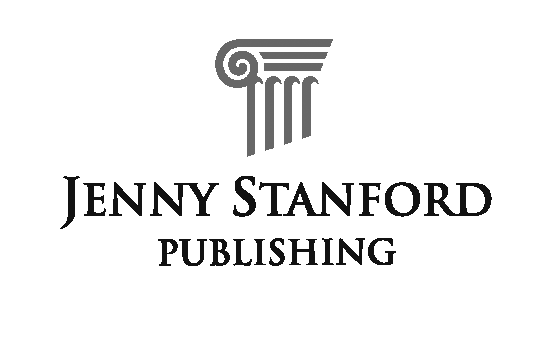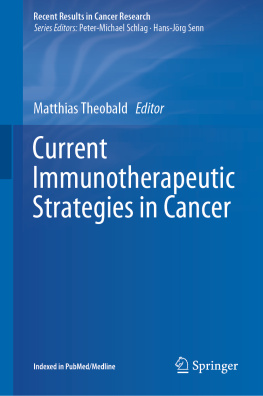
The Tumor Stroma
The Tumor Stroma
Biology and Therapeutics
edited by
Jai Prakash

Published by
Jenny Stanford Publishing Pte. Ltd.
Level 34, Centennial Tower
3 Temasek Avenue
Singapore 039190
Email:
Web: www.jennystanford.com
British Library Cataloguing-in-Publication Data
A catalogue record for this book is available from the British Library.
The Tumor Stroma: Biology and Therapeutics
Copyright 2022 by Jenny Stanford Publishing Pte. Ltd.
All rights reserved. This book, or parts thereof may not be reproduced in any form or by any means, electronic or mechanical, including photocopying, recording or any information storage and retrieval system now known or to be invented, without written permission from the publisher.
For photocopying of material in this volume, please pay a copying fee through the Copyright Clearance Center, Inc, 222 Rosewood Drive, Danvers, MA 01923, USA. In this case permission to photocopy is not required from the publisher.
ISBN 978-981-4968-06-5 (Hardcover)
ISBN 978-1-003-22492-1 (eBook)
This book is dedicated to my late mother, Geeta Bansal
Contents
- Ahmed M. R H. Mostafa, Alaa M. Ramadan, Arne stman, and Jai Prakash
- Siavash Mansouri and Rajkumar Savai
- Barnali Deb, Rajan Datar, Sewanti Limaye, and Prashant Kumar
- Zalak Bhut, Marcel Alexander Heinrich, and Jai Prakash
- Adilson Fonseca Teixeira, Peter ten Dijke, and Hong-Jian Zhu
- Kunal Pednekar, Marcel Alexander Heinrich, and Jai Prakash
- Tao Lu, Leon W. M. M. Terstappen, and Jai Prakash
- F. A. Vuijk, R. Houvast, V. M. Baart, C. J. H. van de Velde, A. L. Vahrmeijer, D. E. Hilling, J. S. D. Mieog, M. Slingerland, L. E de Geus-Oei, L. J.A. C. Hawinkels, and C. F.M Sier
- Marcel Alexander Heinrich, Ngoc Tien Huynh, Yu Shrike Zhang, and Jai Prakash
Preface
The tumor stroma, commonly known as the non-cancerous component of tumors, was identified more than 70 years ago and was seen merely as a fibrotic tissue surrounding cancer cells. However, the actual role of the tumor stroma within the tumor microenvironment has been recognized only a bit more than a decade ago.
Until early 2000s, the research on cytotoxic agents and anti-angiogenic therapies was still leading the therapeutic pipeline. During that time, with the help of a handful of reports, researchers began to understand the tumor stroma interactions and the role of stromal fibroblasts in tumorigenesis. The tumor stroma was mainly recognized as a structural barrier to protect tumor cells and therefore became a target to hit the tumor. Studies proposed that immune cells such as T cells reject tumors by destroying the stromal infrastructure and subsequently eliminating residual tumor cells. New targets in stromal fibroblasts were identified and therapeutic agents were developed to deplete the tumor stroma. In late 2000s, some studies showed that combining anti-stromal agents with chemotherapy enhanced their therapeutic efficacy in preclinical models. This prompted clinical trials in patients with pancreatic cancer, one of the deadliest cancer types with high stroma abundance. Unfortunately, these clinical trials did not deliver the desired outcomes, and this on the one hand raised questions and concerns about the role of tumor stroma in total, while on the other hand these results prompted researchers to unravel the complexity of the stroma.
In recent years, huge efforts have been made by researchers to better understand the heterogeneity and complexity of the biological components within the tumor stroma, such as different cellular phenotypes and cellular interactions. Furthermore, recently the role of tumor stroma in hindering the attack by immune cells as well as in limiting the efficacy of immunotherapy has been proposed by a number of excellent studies. Evidently, the tumor stroma has now been recognized as the key target to improve the efficacy of current anti-cancer therapeutics as well as to develop new therapeutics. Nevertheless, the field of tumor stroma has been continuously maturing and a lot remains to be unfolded in future.
My colleagues in the field used to frequently ask me whether the role of tumor stroma is pro- or anti-tumoral, whether it still holds the potential for developing therapeutics, and whether there are new opportunities in this field. These questions prompted me to assemble this book, which provides a comprehensive overview of the current status of the field. It was conceived as a means to highlight some of the key biological aspects of the tumor stroma as well as the therapeutic opportunities in this landscape. Since immune cells are regarded as the non-stromal component of the tumor microenvironment, I have purposefully excluded in-depth discussion on the tumor immune system, except tumor-associated macrophages and interactions between the stroma and immune cells. I have put more emphasis on describing the tumor stroma interactions, the physical makeup of the stroma, and the clinical relevance of stromal markers. The book comprehensively covers potential therapeutic targets associated with the tumor stromal components, including cell surface receptors, intracellular signaling pathways, and microRNA. New technologies related to 3D models and tumor-on-chip models recapitulating the tumor microenvironment are also covered to provide readers an overview of these emerging areas that are crucial for carefully evaluating new therapeutics at the preclinical stage. Furthermore, the molecular imaging of the tumor stroma and other components of the tumor microenvironment covered in the book will lead the way to monitor the success of many therapeutics in the clinic. I believe it will serve as a handbook for graduate students, postgraduate researchers, pharmaceutical scientists, and biomedical engineers working in this field.
I sincerely thank all the contributing authors for their efforts and dedication in compiling this book.
Jai Prakash
August 2021
Chapter 1 The Tumor Stroma: Key Component of Solid Tumors
Jai Prakash
Department of Biomaterials Science and Technology, Targeted Therapeutics Section, Technical Medical Centre, University of Twente 7500AE Enschede, The Netherlands
1.1 Normal Stroma Versus Tumor Stroma
Any tissue in our body contains stroma (connective tissue) which plays a vital role in providing the structural integrity and remodeling to the epithelial tissue. However, the stroma in a tumor tissue is quite different compared to the normal stroma, as it is highly reactive and often known as desmoplasia in pathological terminology [) [1].

]. Copyright 2011 Elsevier.
Over 30 years ago, Dvorak proposed tumors as wounds that do not heal and associated the development of the tumor stroma with the wound healing process []. The field of tumor stroma interaction has received an increasing attention with respect to its significance for the pathological characterization of the tumor, prognosis of the tumor progression as well as for designing novel therapeutic strategies against cancer.
Next page












 ]. Copyright 2011 Elsevier.
]. Copyright 2011 Elsevier.